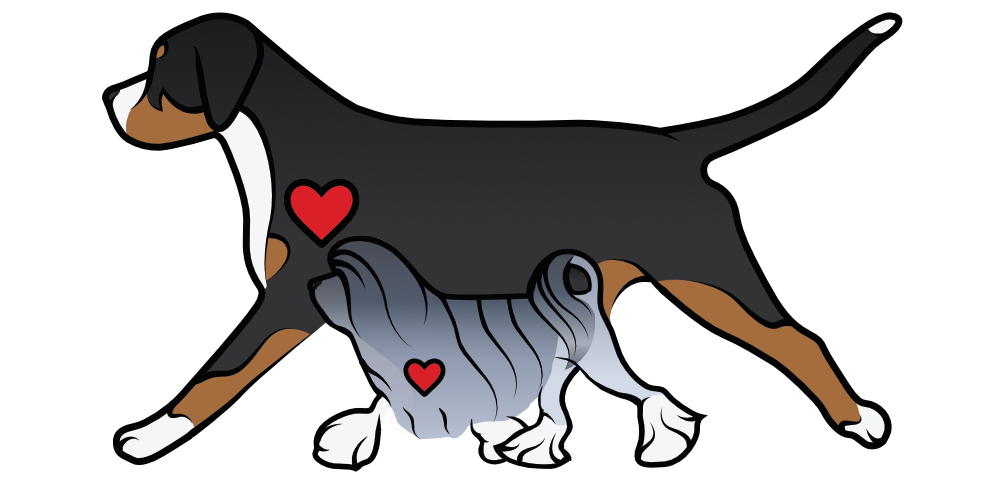[youtube https://www.youtube.com/watch?v=pc4Dqk6C2FA&w=640&h=480]
This video shows the harnessing and hitching section that is common in many draft tests.

Roman Reign Greater Swiss Mountain Dogs and Lowchens
Passion for Cherished Companions, Driven by Working Heritage
[youtube https://www.youtube.com/watch?v=pc4Dqk6C2FA&w=640&h=480]
This video shows the harnessing and hitching section that is common in many draft tests.
Lesson: Harnesses, Harnessing, and Hitching
Here’s a video on harnesses and harnessing. I may make other videos with more details, but here’s the basics to get you started.
Here’s a video on hitching your dog from a sit position. It works the same way from a stand position. Mouse just happened to be sitting.
I got returned from a draft trial just last night, and with the weekend fresh in my mind, we’re going to go over some draft trial tips and info before diving back into training posts. Here are some skills that I encourage my draft students to master before going to a draft trial.
Basic Control – both dog and handler will need to have a solid working relationship with several commands. For basic control, the dog that can qualify in rally obedience should have enough control for a draft test’s basic control. The dog needs to:
Basic control is NOT scored like competitive obedience and the requirements are not as strict. The dog does NOT need to be in heel position at all time, and you may talk to your dog during the entire test (except the stays).
Harness and Hitching: You should be able to harness a dog correctly, and hitch a dog correctly. In my opinion, harnessing and hitching should not be a jerry-rigged last minute chore. It is first and foremost, the most crucial part of safety in dog drafting. Dog drafting is a sport that can be very dangerous to you and your dog if do not do it properly. Thusly, I am a stickler for safe harnessing and hitching. While I have not failed someone for minor issues with harnessing, I cannot pass a dog that is in an unsafe rig. Future posts on that.
Maneuvering course: My rule of thumb is if a dog can master the following exercises with only voice or hand commands and no treats, then they can pass any draft test. Yes, they are much more difficult than what is required, but I always try to train for tougher than the test.
Freight Haul:
Happy Training!
Proudly powered by WordPress | Theme: Baskerville 2 by Anders Noren.